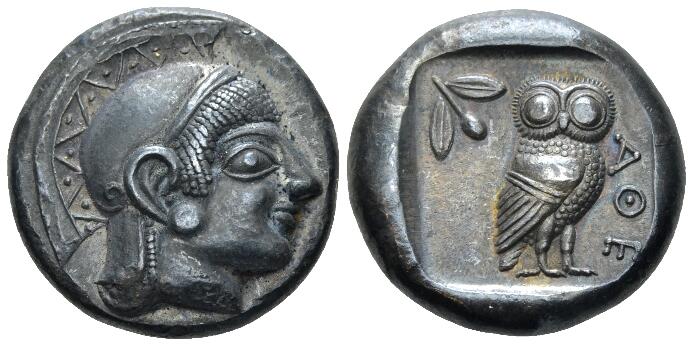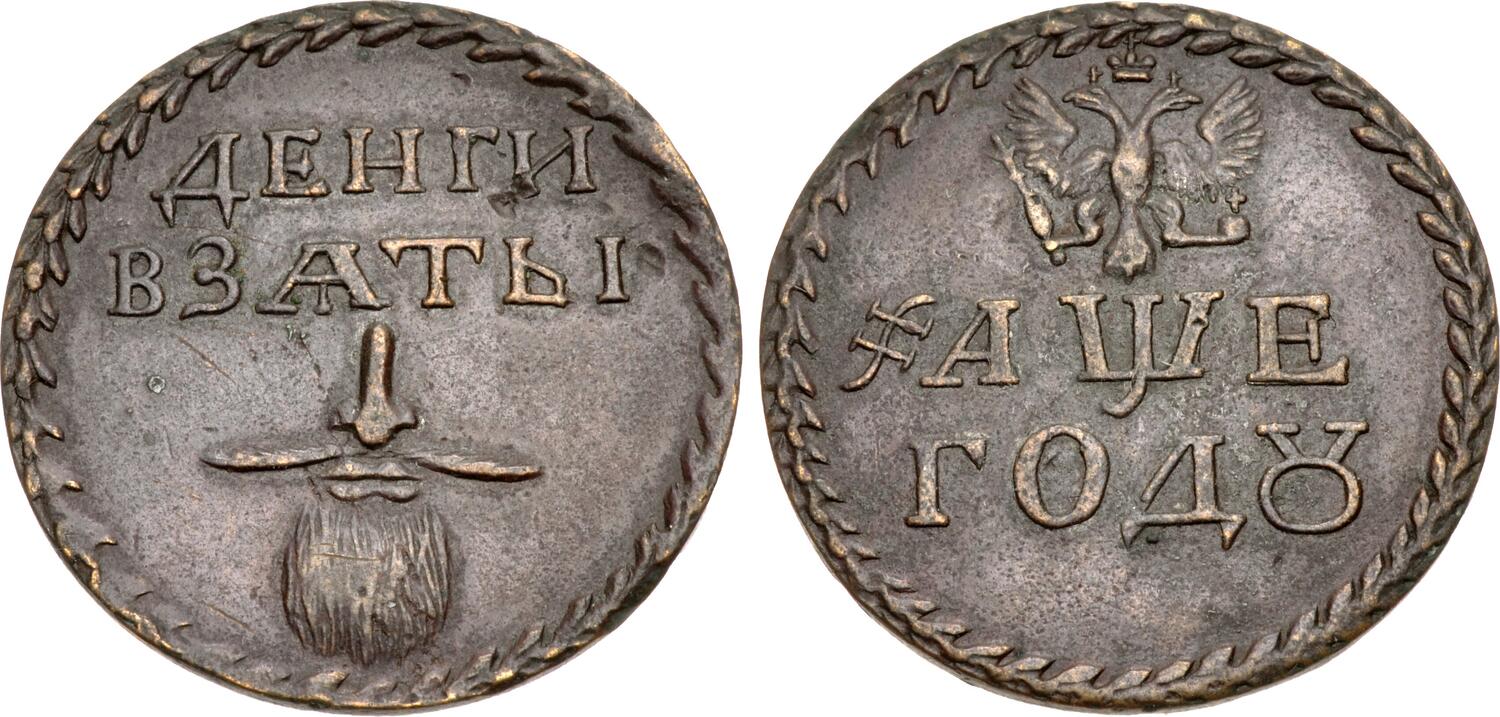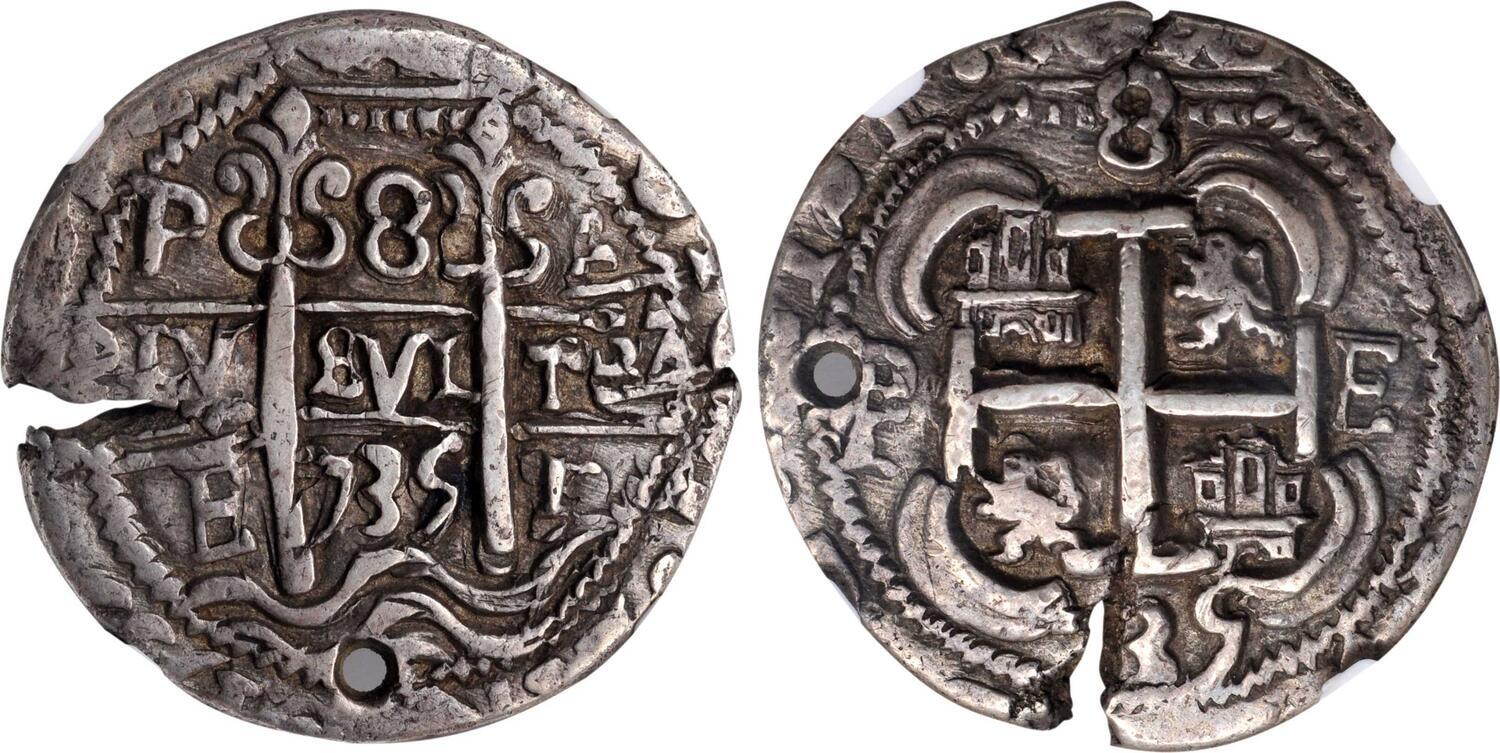Enlace a mi tienda en ebid. Iré subiendo más moneditas de mi colección
https://stores.ebid.net/moneditis
—————————————————————————————————————————————
Mirando de reojo algunas subastas me he encontrado con esto. Atentos a las fechas (siglo)
https://www.numisbids.com/n.php?p=lot&sid=4903&lot=609

Turtle. Rev. N-I dolphin within quadripartite incuse. For type, cf. BMC 190
Extremely fine
https://www.numisbids.com/n.php?p=lot&sid=4903&lot=608

Extremely fine
Todas estas «curiosidades» proceden de la misma subasta: Naville Numismatics. Hay alguna más 😉
———————————————————————————————————————————————————–
https://www.numisbids.com/n.php?p=sale&sid=4903&cid=150840
Russia. Ivan IV Vasilyevich “The Terrible”, Grand Duke of All Russia. Wire Kopeck «ФС» Novogrod mint, 1533-1547
Ivan IV Vasilyevich “The Terrible”
“GRAND DUKE IVAN OF ALL RUSSIA”
NOVGOROD mint, 1533-1547, RARE.
SILVER WIRE KOPECK “FS”(«ФС»), RUSSIA.
0.75 g; 14 mm
nEF/EF
On a coin stamped rider with a spear – spear, копье – the so-formed word KOPEK, КОПЕЙКА.
Mint coins using the following technologies. From silver ingot was manufactured wire and cut it into pieces of a certain weight. Billets passed through stamps. Most interesting is that no one of the same scales. The stamp was more silver plates and got hit in one edge of the coin, then another.
On one side of the coin scales often portrayed rider less mythical animal or flower. On the other side of the prince’s name and position (relative or great). In the 16-17 century, silver was valued, and per gram of gold was given ten grams of silver. The scales were not the main image, and its weight.
Peasants often carry these small coins in their mouths to avoid robbery.
Minted and used as cash coin scales to the reforms of Peter 1 (up to 1718).
—————————————————————————————————————————————————————
https://www.numisbids.com/n.php?p=lot&sid=4926&lot=537

Estimate: 300 USD Price realized: 900 USD
Among his many efforts to westernize Russian society, in 1698 Petr I placed a tax on beards, then seen as a particularly eastern tradition. Those who paid the tax were issued tokens to prove they were allowed to wear facial hair.
https://www.numisbids.com/n.php?p=lot&sid=4911&lot=40051
https://www.numisbids.com/n.php?p=lot&sid=4911&lot=40052

https://www.numisbids.com/n.php?p=lot&sid=4911&lot=40053
KM-R31a; Cal-Type 149 #832. Weight: 26.89 gms. A handsome example of this ever-popular type with a bold well-centered strike on a compact flan. Minimal doubling is noticed on the right side of the obverse, though far less than normally encountered on these types. A couple of small planchet cracks formed during the manufacturing process adding a bit of character to this charming piece. As indicated on the NGC insert, this piece has been holed, a commonly encountered occurrence on these sought after issues, but is hardly a distraction. Despite its shortcomings this nicely preserved survivor is pleasing to the eye and sure to be a welcome addition to the next collection it enters.
Estimate: $1500 – $2500
Podría seguir…pero lo voy a dejar aquí; se acerca septiembre peligrosamente… 😉
P.S. Enlace remitido por un amable lector


Impresionante 8 reales Carlos II ceca Potosi año 1687, ensayador VR Auténtica 100%

¡Im-presionante! Auténtica, dice…?? Parece calamina…



Parece calamitá más bien 🙂
Gracias por el blog, un saludo.
Hay muchas cosas raras por ahí…
Gracias a ti por leerlo